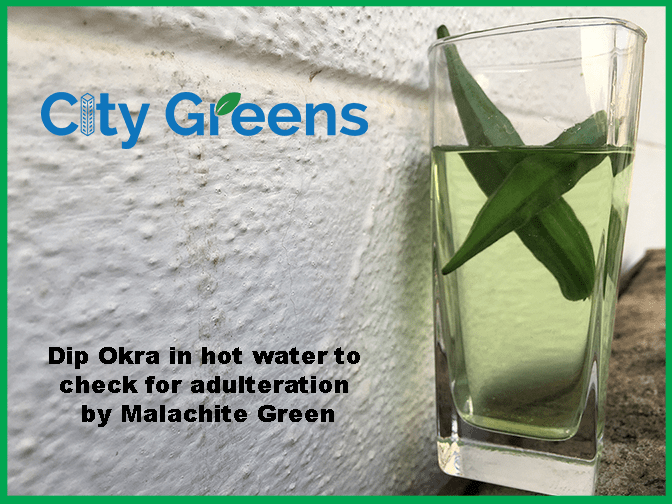Many of us don’t like okra (‘Bhindi’ aka Lady Finger), and there are many for whom this is the vegetable of choice. It depends on how it is cooked. Masala Bhindi Dry, Garlic Bhindi, Bharwan bhindi are all classic Indian Okra dishes cherished by many. Now before you start to make one of those delicious dishes, there is one thing to remember - ‘Adulteration’. Yes, even okra is adulterated with coloured dyes and harmful chemicals.
Hawkers and vegetable-mandi vendors buy vermin-infected ones and colour them to give an appealing look. They also collect dried and dull ones for a lower price and dye them. So it is important to identify the adulterants that go into okra before you cook those mouth-watering Bhindi dishes.
Adulterants used in ladyfinger
- Copper Sulfate: Dipping dried and dull okra into copper sulfate solution imparts a fresh green colour to it.
- Malachite Green: A dye called ‘Malachite green’ is also used to give okra that attractive green colour.
Side effects of consuming adulterated ladyfinger
Ingestion of copper sulfate over a long time may cause chest and abdominal pain. It can then lead to nausea and headache. Consuming a large amount can cause severe damages to multiple organs, including the abdomen, brain, liver, and kidney.
Malachite green can have carcinogenic effects. It can cause tissue damage. It can also lead to abnormalities in development. But all these severe problems would occur if one were to it for a very long time and have had it in larger concentrations.
In small quantities, you may not be able to notice the presence of these adulterants in your food.
How to identify adulteration in ladyfinger at home
- Fill a container with hot water. Put okra in it for a few minutes. If water changes to a light green shade, it indicates the presence of a dye.
- Soak a piece of cotton in liquid paraffin. Rub it on the surface of okra. If the cotton catches any colour, then the okra is adulterated.
- Rub a piece of cotton soaked in vegetable oil, on the outer surface of okra. Any change in colour of the cotton piece indicates adulteration.
Best practices while shopping for ladyfinger
We all need to be very careful and observant these days while buying vegetables. Unfortunately, there are no proven ways to identify coloured okra while buying them. But you can always check at your home before cooking through the methods discussed above. Here are some ways to buy healthy and fresh okra.
- Choose the one which is glossy green
- Try to break off the tip of okra with hand. If it breaks crisp, it is healthy okra.
- Okra on which you can feel seeds from outside is not the good one.
Stay Informed. Stay Safe!
